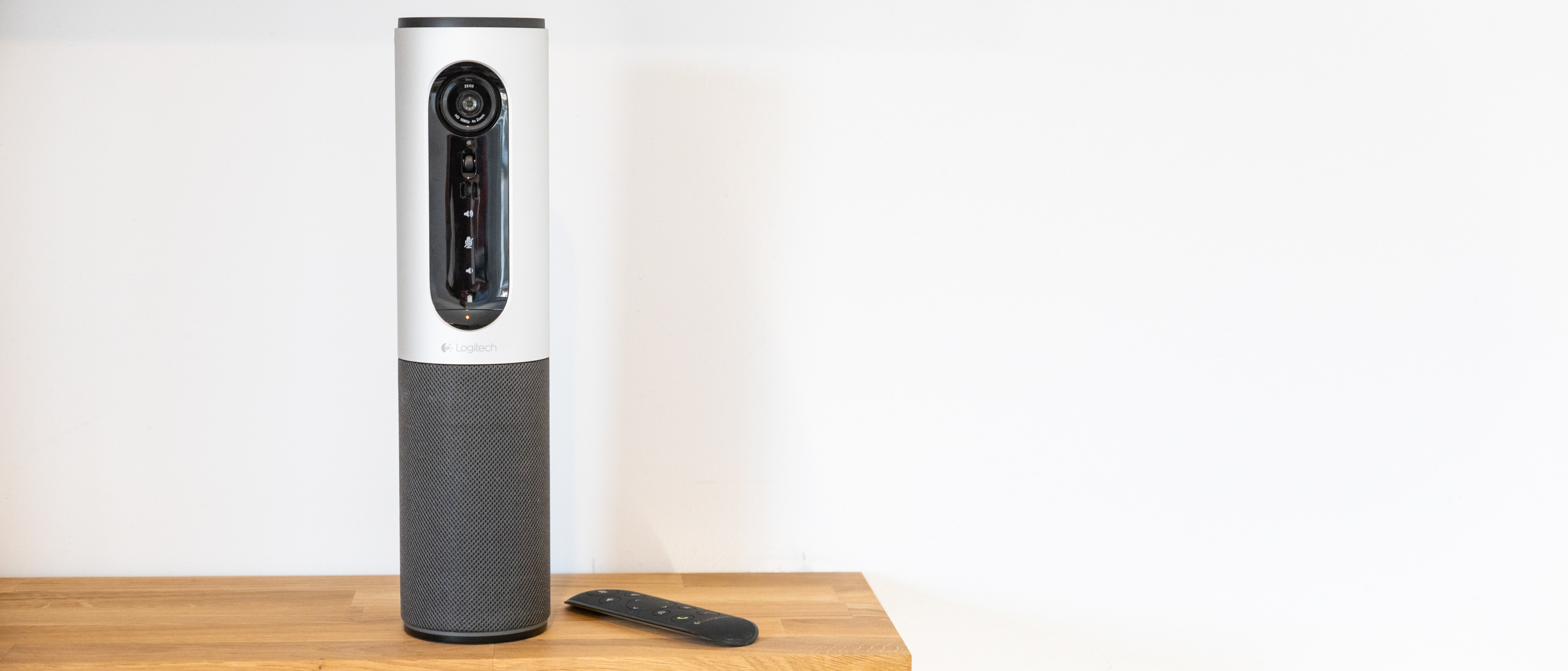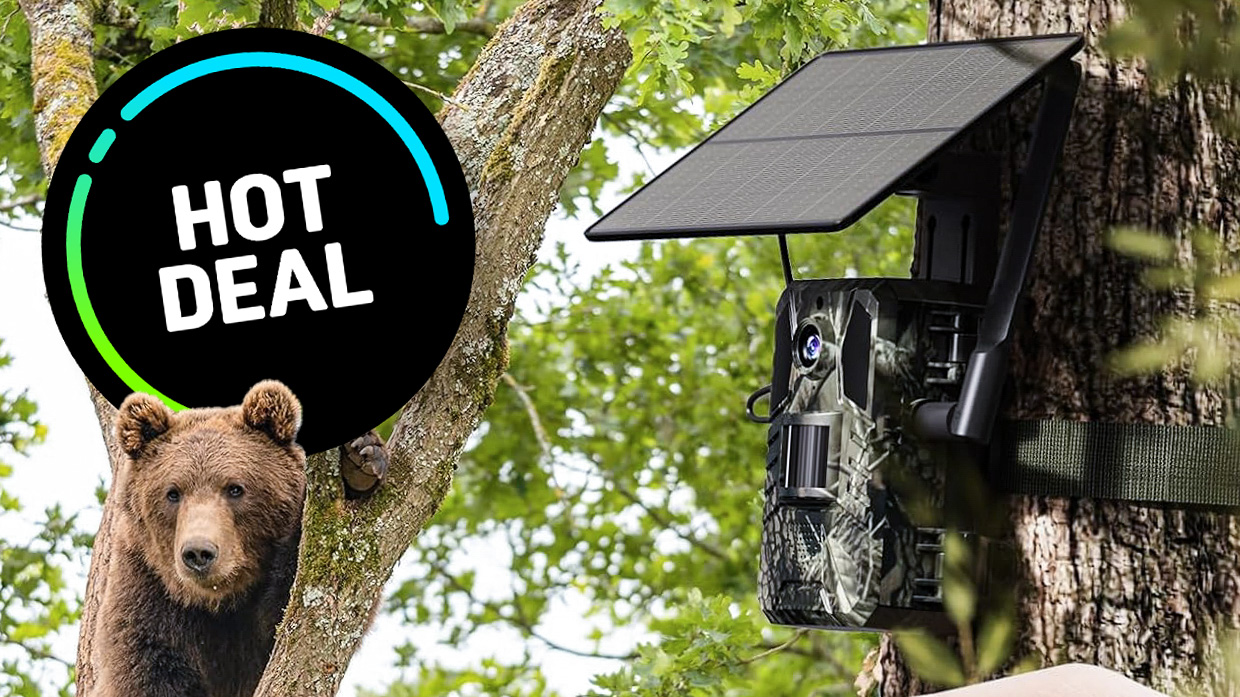Digital Camera World Verdict
Not for consumers, the Logitech ConferenceCam Connect is a premium webcam designed for meeting room video calls, with great audio, three hours of battery life, HD video and a remote control. But it’s also starting to show its age, and now shares the corporate market with newer, similarly-priced rivals.
Pros
- +
Premium design
- +
Remote cleverly doubles as privacy cover
- +
Three hours of video call battery life
Cons
- -
Starting to show its age
- -
Horizontal adjustment is manual only
- -
Strictly for corporate customers only
Why you can trust Digital Camera World
The Logitech ConferenceCam Connect isn’t the newest webcam on the block, having arrived all the way back in 2015. But it’s still an interesting product worthy of some attention. In short, it’s a webcam that, instead of clipping to the top of a computer monitor and focusing on one person, is designed so that an entire meeting room of people can participate in a video call at the same time.
It is battery powered, and therefore portable, while also packing impressive speakers and Bluetooth for boosting the audio of whatever device the video call is taking place on. But, with a recommended retail price of $499/£439 (albeit reduced at Amazon and elsewhere at the time of writing), this is a very expensive webcam with a small but specific intended audience.
Logitech ConferenceCam Connect specifications
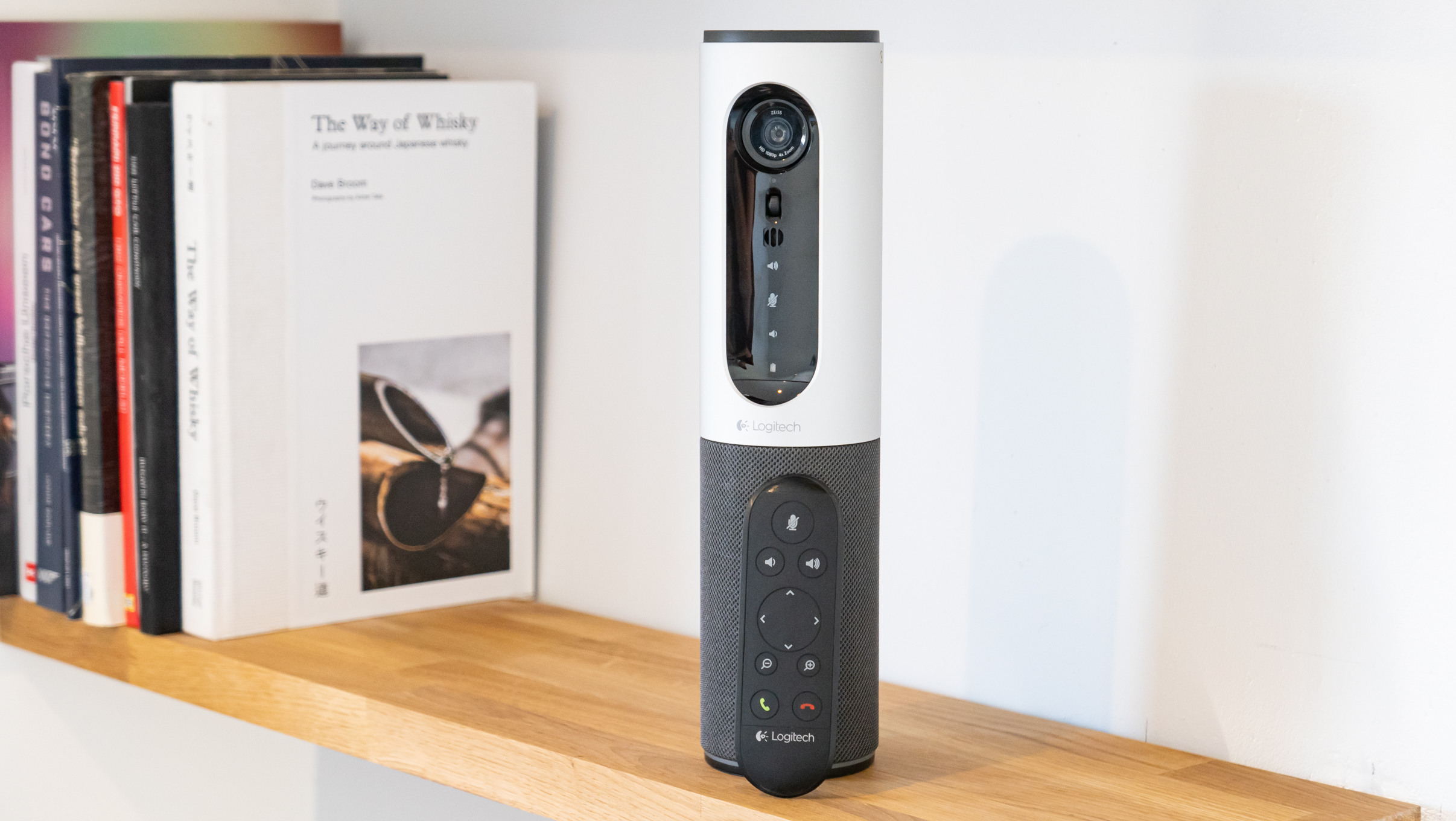
Resolution: 1080p Full HD
Field of view: 90 degrees
Frame rate: Not stated
Digital zoom: 4x
Microphone: 2x omnidirectional
Autofocus: Yes
Privacy cover: Yes, doubles as remote
Connection: Mini USB, HDMI, Bluetooth
Key features
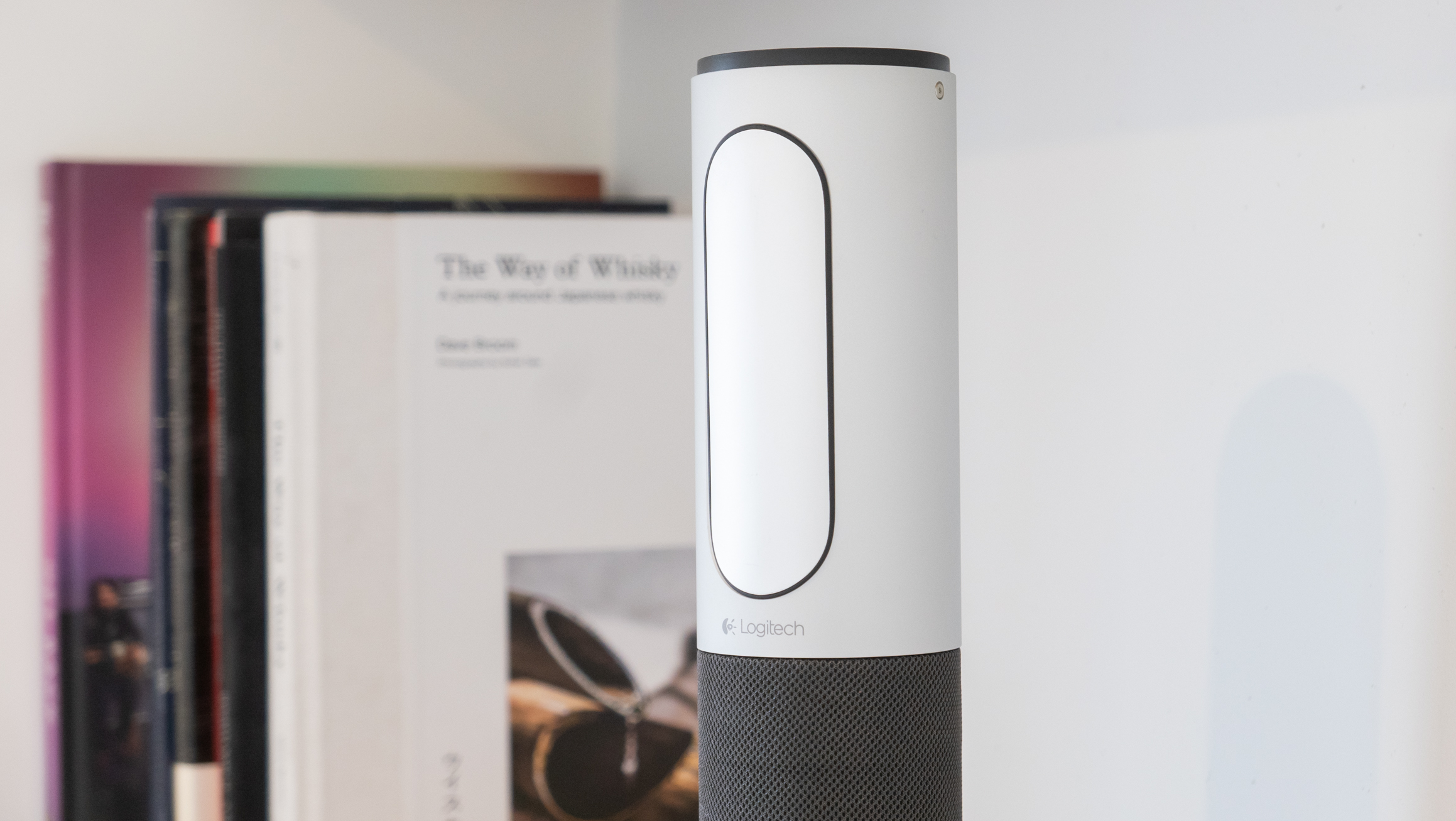
The ConferenceCam’s biggest feature, by far, is its form factor, and how that leads to a larger camera and speaker system than almost all other webcams. Around the same size and shape as a first-generation Amazon Echo smart speaker, the cylindrical device has a Carl Zeiss lens with a 90-degree field-of-view, and the bottom half contains a 360-degree audio system with echo noise cancellation and Bluetooth.
The latter lets you connect the ConferenceCam to your computer, vastly improving the audio quality of video calls.
An included wireless remote is helpful for adjusting the volume and zooming in or out. Given the ConferenceCam is designed to be placed some way from those on the call, the remote is a really useful feature to have. We also like how it has a mute button; this may sound obvious, but pressing a button on a remote to mute ourselves during a call is far easier than reaching for a computer mouse and working out where the mute button is in Zoom, Skype or Microsoft Teams.
An integrated battery means the ConferenceCam can be used wirelessly (albeit still plugged into a computer with a USB cable) for up to three hours of video calls or 15 hours of Bluetooth audio. This makes it easy to relocate the camera between calls, and means you don’t need to worry about finding a plug socket when in an unfamiliar meeting room.
Build and handling
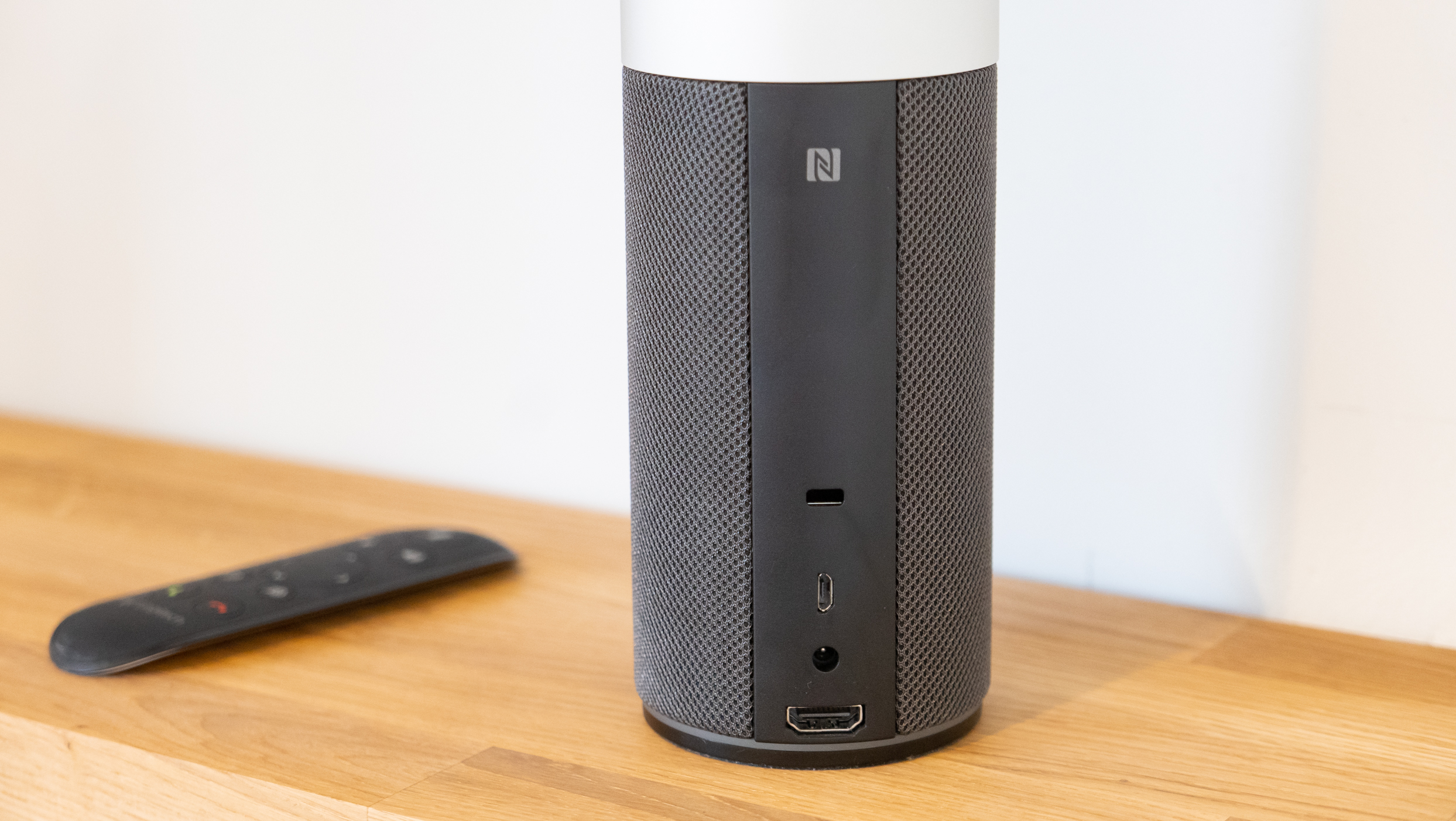
With its metal case and fabric speaker cover, the Logitech ConferenceCam has a premium look and feel that is a world away from some other webcams. The remote cleverly doubles as a privacy cover when not in use, snapping magnetically to the front of the unit and covering the lens, while touch-sensitive buttons on the top control power and switch between modes.
There’s a manual scroll wheel below the camera for adjusting its horizontal view, and the rear houses USB and HDMI ports, plus a Kensington security slot to help prevent theft. Lastly, NFC makes it easy to quickly pair the ConferenceCam with compatible devices, such as smartphones or tablets that can use the webcam as a Bluetooth speaker.
At 304mm tall and 766g, the ConferenceCam is a large device that only really feels at home in a shared office environment. This is certainly overkill for the home office, where webcams that sit on top of computer monitors make far more sense.
But, as we said earlier, this is a device intended for shared usage, such as a corporate environment where several people want to sit around one table and be on the same video call.
Performance
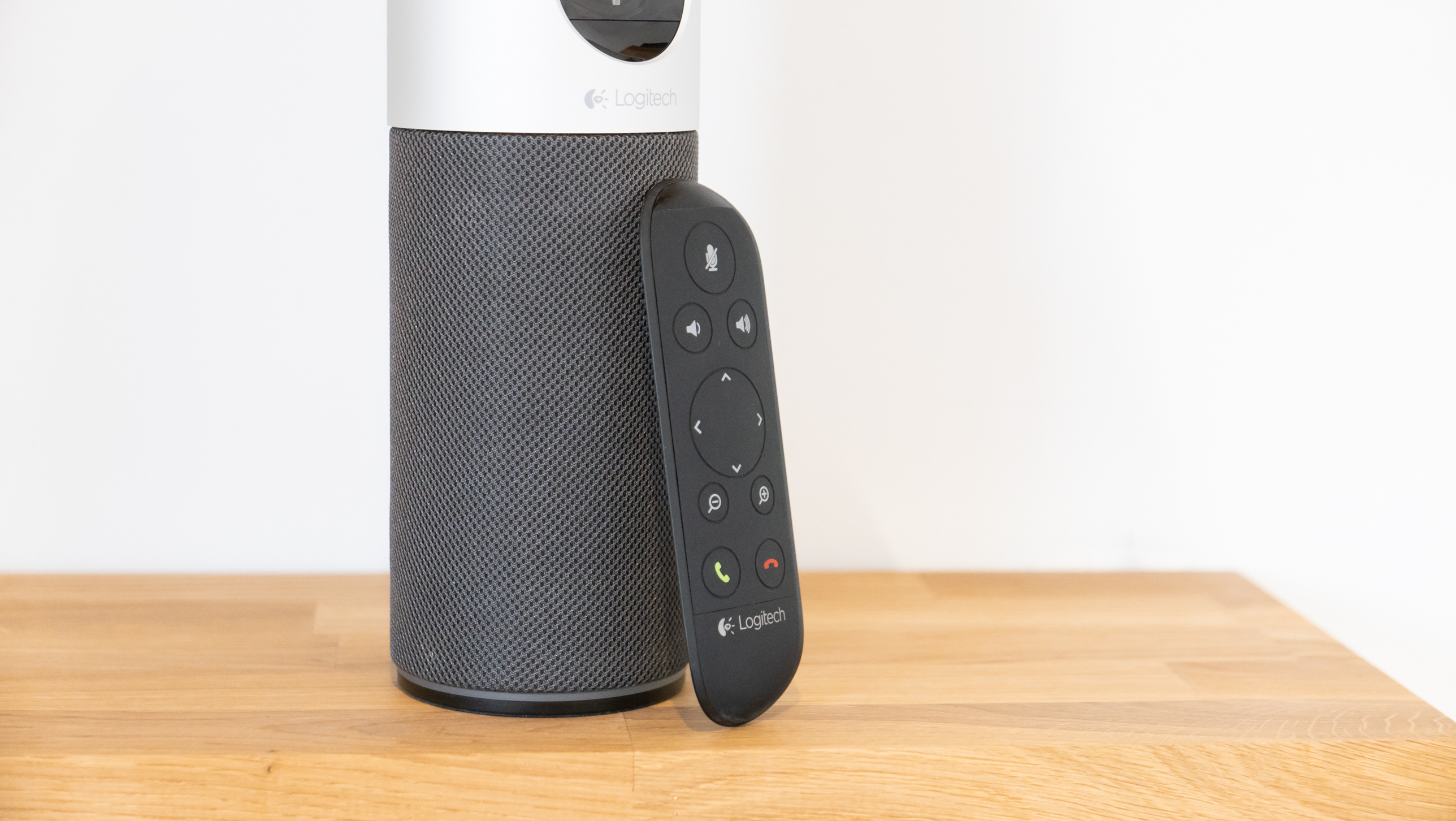
With plug-and-play connectivity, there’s no setup or additional software required. Just plug the ConferenceCam into your computer with the included USB cable, and it’ll appear in your video calling app of choice. The webcam is compatible with Skype, Microsoft Teams, Zoom, Google Meet, Cisco Jabber, WebEx, GoToMeeting and others.
We found video quality to be very good. And, while some other (and much smaller/cheaper webcams) push out more pixels than the 1080p resolution of the ConferenceCam, we think the larger lens helps to produce better video quality. We also like the 90-degree field-of-view, although would like to have seen Logitech push this even further, perhaps to 120 degrees.
Audio quality is very good indeed, and where the ConferenceCam really elevates itself above a more traditional webcam setup. When compared to a laptop with integrated webcam and speakers, the Logitech offers a much better experience. But that experience comes at a high price.
Logitech ConferenceCam Connect: Verdict
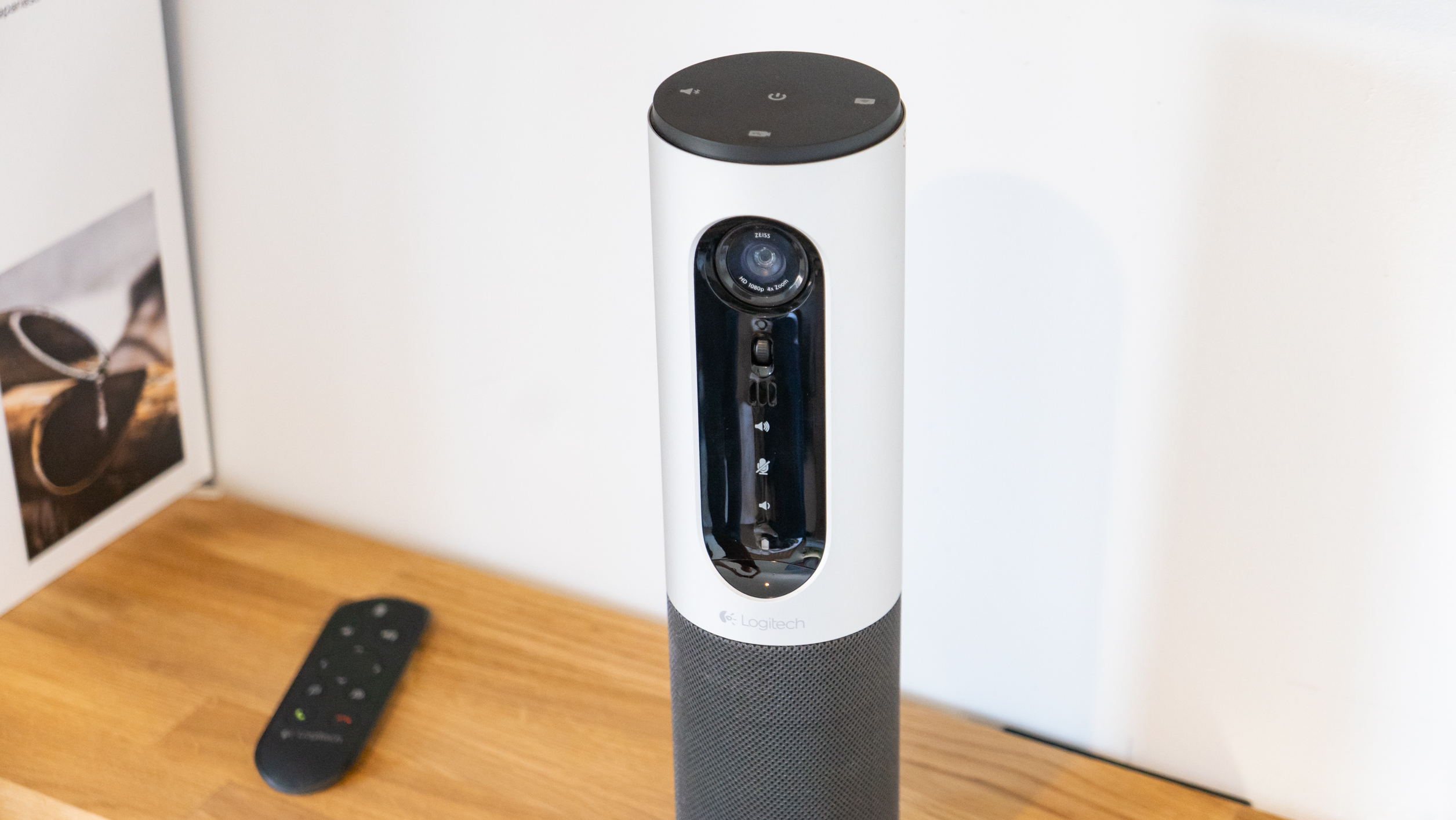
This is very much a webcam for enterprise users who need a device that is portable and battery powered, and makes it very easy to quickly set up and host a shared video call in an office environment. This is not intended for consumers, who would be much better off buying a traditional, monitor-mounted webcam for a fraction of the price.
We also worry about the age of the ConferenceCam, as it arrived all the way back in 2015 and is now seven years old. Even in the glacial world of webcams, this makes it pretty old.
That said, if you are a business customer who has the budget for a webcam to be used in a shared meeting room, the Logitech ConferenceCam Connect is a nicely designed product with excellent build quality, smart design, good performance and a set of features that will be very useful in most office meeting rooms.
Read more
The best webcam
Best conference webcams
Best PTZ camera
Best 4K webcam
Best Mac webcam
The best camera for streaming
Best projection screens
Best film scanners
Best all-in-one printers
Alistair has been a journalist since 2011 and used to be Deputy Technology Editor at IBTimes in London. His specialist tech subjects include smart home gadgets, phones, wearables, tablets and dashcams. He is the host of The AutoChat Podcast.
